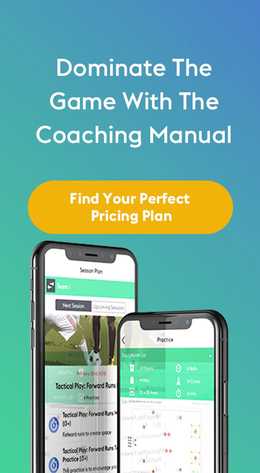One of the most challenging parts of the Director of Coaching role is ensuring that the plans you’ve painstakingly devised – such as player development objectives, coaching philosophy and club culture – don’t just exist in your head, or within a lengthy slideshow or document. You need to trust that your coaches understand your vision, and have the expertise to implement it. Rather than leaving it to chance, the best approach a DOC can take is to devise a detailed coaching curriculum.
What is a soccer coaching curriculum and why are they used?
As the name suggests, a soccer coaching curriculum is essentially a detailed, season-long syllabus that defines what your coaches should be focusing on during any given training session.
It could be a top-level itinerary that outlines the general themes to concentrate on week by week, such as maintaining possession, playing through the thirds, or pressing the opposition. Or it could be a more granular breakdown detailing the specific sessions and drills that should be run on each day.
In addition to the specific sessions, a curriculum should incorporate clear aims and outcomes – in other words, the reason why you’re doing it, and what you hope to get from it.
There are three main benefits to introducing a coaching curriculum:
- The DOC can be confident that coaches are focusing on the right areas.
- Coaches no longer have to worry what session they’ll be running tomorrow, next week, or in a month.
- Players benefit from a well-thought-out training plan, with a clear progression from week to week, rather than a scattergun approach with no link from one session to the next.
Of course, if you’ve never built a coaching curriculum from scratch before, it can seem like an intimidating and labour-intensive process. As with any new task, it can be difficult to figure out how to get started, never mind what the finished article should look like.
With that in mind, we’ve put together an outline for a simple curriculum, then expanded it to include specifics geared toward players in different age groups.
Example: A template soccer coaching curriculum
- Aims: From a top-level perspective, what are the driving purposes behind your curriculum? What are the two to three things that underpin your approach to working with the age group in question?
- Outcomes: Why are those your aims? What do you hope to achieve by focusing on them? For instance, if one of your aims is to ensure that players enjoy being a part of the club, the outcome could be to improve player retention.
- Methodology: This is where you slot together the individual training sessions designed to meet the aims and deliver the desired outcomes.
Coaching curriculums tailored to different age levels
Naturally, there’s no one-size-fits-all approach to soccer coaching. The needs of a youth player are very different to those of a college player, and these differences must be reflected within the coaching curriculum.
To reflect the importance of a carefully tailored approach, we’ve taken the outline for a simple curriculum and added in aims, outcomes and methodologies relevant to three different player groups – youth level, college level, and professionals:
Youth level
- Aims: Provide equal playing time; instil a love of the game; prepare youth players for the next age level.
- Outcomes: Gain buy-in from players and parents; retain players; build long-term team success.
- Methodology: For instance, instilling a love of the game could be achieved through focusing on fun drills in which players get to spend plenty of time with the ball, and promoting competition within the squad.
College level
- Aims: Ensure players are bought into club culture and sporting philosophy; encourage familiarity with multiple playing positions; improve fitness levels.
- Outcomes: Improve player retention; build a flexible, adaptable playing squad able to cope with different systems and formations; allow coaches to implement a high-intensity game plan.
- Methodology: For instance, encouraging familiarity with multiple playing positions could be achieved through training sessions that force players to take up different positions and/or use their weaker foot.
Professional level
- Aims: Ensure players are bought into club culture and sporting philosophy; improve on-field decision-making; move the ball faster.
- Outcomes: Improve player retention; enable players to overcome challenges during matches, when coaches are unable to intervene; allow coaches to implement a fast, counter-attacking game plan.
- Methodology: For instance, improving on-field decision-making could be achieved through scenario-based training sessions (e.g. playing 4 vs. 5 to replicate having a player injured or sent off).
How The Coaching Manual can help you build a coaching curriculum
Sounds like a lot of work? It doesn’t have to be.
While it’s up to you to decide on desired aims and outcomes and to define a coaching philosophy, The Coaching Manual is here to help with the hard yards of piecing together a season plan.
All you need to do is follow seven simple steps and our software will produce a detailed, season-long training syllabus tailored to your specific needs. Rather than hours of hard work, it’ll do the job in just a couple of minutes. Give it a try!



